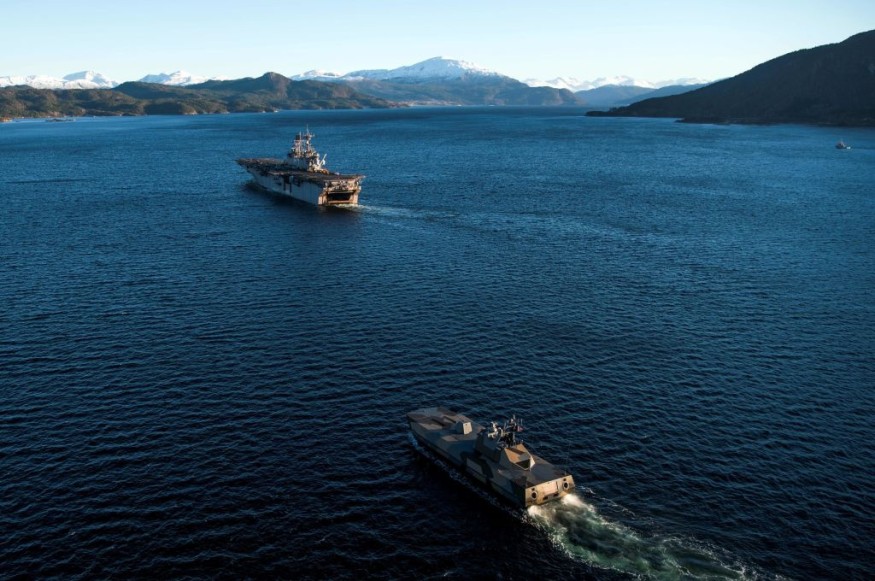Seismic activity from an underground volcano near Tokyo has resurfaced "ghost ships" from the Pacific Ocean's depths, sunk after one of World War II's most renowned engagements.

Bringing the Ships to Shore
The 24 ships came ashore on the western side of the island of Iwo Jima, which is about 760 miles (1,200 kilometers) south of Tokyo, after being forced up, along with the seafloor, by the undersea volcano Fukutoku-Okanoba, according to helicopter footage from Japan's All Nippon News (ANN).
WWII Ships
During the Battle of Iwo Jima in 1945, US troops sunk the ships. The 36-day assault saw around 70,000 US Marines combat nearly 20,000 Japanese forces sheltering in bunkers inside the island's volcanic rocks, making it one of the deadliest battles in WWII.
Twenty thousand marines were injured, and almost 7,000 were dead by the end of the war. Except for 216 Japanese troops taken alive, nearly all Japanese soldiers were killed in the fighting.
The shattered, sea-bleached wreckage remains cargo ships captured by the US Navy and destroyed after the conflict According to the US National Archives, the ships were sunk parallel to the shoreline to form a breakwater, shielding both weapons and troops from oncoming waves as they were unloaded onto the island.
Because Iwo Jima had no port, the ships were sunk parallel to the shoreline to form a breakwater, shielding both weapons and troops from oncoming waves as they were unloaded onto the island.
Active Seismic Activity
Since August, Fukutoku-Okanoba has been erupting underwater. In addition to bringing the ships and the seabed they are resting on into view, the volcano's seismic activity has resulted in the emergence of a small crescent moon-shaped island from the water. However, according to Setsuya Nakada, head of the Japanese government's Center for Integrated Volcano Research, the island formed from pumice and volcanic ash is anticipated to vanish shortly due to erosion.
Iwo Jima is part of the Bonin Islands, a Pacific Ocean series of around 30 subtropical islands. The island chain, which was formed by the subduction of the Pacific tectonic plate beneath the Philippine Sea Plate, is prone to earthquakes and volcanic eruptions and has seen an increase in seismic activity in recent weeks, according to Japan's Meteorological Agency. For example, on Oct. 7, a magnitude-5.9 earthquake rattled Tokyo and eastern Japan's structures. In addition, since 2013, Nishinoshima, another volcanic island in the group, has been releasing gas and lava.
Mount Suribachi on Iwo Jima is the dormant vent of a still-active volcano, and according to one astrophysicist's ranking, it is one of the world's top ten most hazardous volcanoes. Moreover, there's every reason to believe that the present flurry of seismic activity is leading to an eruption.
"The discolored sea region has spread to nearby locations," Nakada told the All Nippon News station. "A large eruption on Iwo Jima is a possibility."
Resurfaced Monolith
The formerly sunken monoliths will likely remain on the island for some time until Mount Suribachi erupts again or the seafloor on where the ghost ships are lying sinks.
Because Iwo Jima is desolate and seldom visited by humans - partially due to the massive quantity of unexploded bombs and grenades left behind - it seems doubtful that the ships would be scrapped or evacuated by Japanese officials.
For similar news, don't forget to follow Nature World News!
© 2025 NatureWorldNews.com All rights reserved. Do not reproduce without permission.





